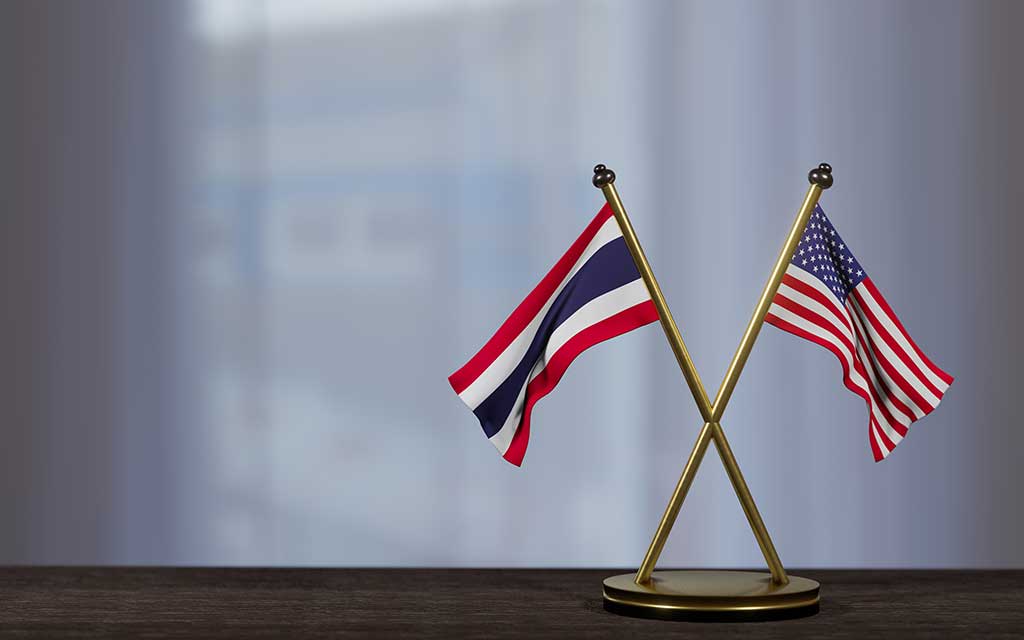US-Thailand Treaty of Amity
US-Thailand Treaty of Amity. The United States and Thailand share a longstanding and multifaceted relationship, marked by diplomatic cooperation, economic partnerships, and cultural exchanges. At the heart of this relationship lies the Treaty of Amity and Economic Relations, a historic agreement signed in 1966 that has played a pivotal role in fostering economic collaboration and friendship between the two nations. This article delves into the significance of the US-Thailand Treaty of Amity, exploring its origins, key provisions, and enduring impact on bilateral ties.
I. Historical Context and Origins of the Treaty
A. Post-World War II Era:
- Following World War II, the United States sought to bolster its presence in Southeast Asia to counter the spread of communism.
- Thailand emerged as a key ally in the region, offering strategic military bases and serving as a bulwark against communist expansion.
B. Economic Cooperation:
- Recognizing the mutual benefits of enhanced economic cooperation, both countries sought to formalize their economic ties through a bilateral agreement.
- The Treaty of Amity was signed on May 29, 1966, laying the foundation for expanded trade and investment between the United States and Thailand.
II. Key Provisions of the Treaty
A. National Treatment:
- The Treaty grants US citizens and companies the same treatment as Thai nationals in various economic sectors.
- This provision ensures that American businesses enjoy equal rights and privileges in Thailand, fostering a favorable environment for investment.
B. Ownership and Control:
- The Treaty allows US citizens and companies to own and control businesses in Thailand without being subject to foreign equity restrictions.
- This provision facilitates foreign direct investment (FDI) and encourages US companies to establish a presence in Thailand.
C. Dispute Resolution:
- The Treaty provides mechanisms for the resolution of disputes between US investors and the Thai government.
- Disputes may be resolved through diplomatic channels or international arbitration, promoting a stable and predictable investment climate.
III. Impact on Bilateral Relations
A. Economic Growth:
- The Treaty of Amity has contributed significantly to Thailand’s economic development by attracting foreign investment and fostering entrepreneurship.
- US companies have invested billions of dollars in Thailand, creating jobs, transferring technology, and stimulating economic growth.
B. Trade Relations:
- The Treaty has facilitated bilateral trade between the United States and Thailand, leading to increased exports and imports.
- Both countries have benefited from expanded market access and reduced trade barriers, promoting balanced and mutually beneficial trade relations.
C. Cultural Exchange:
- Beyond economic cooperation, the Treaty of Amity has strengthened cultural ties and people-to-people exchanges between the two nations.
- Educational programs, exchange visits, and cultural initiatives have fostered greater understanding and appreciation between the American and Thai people.
IV. Contemporary Relevance and Future Outlook
A. Adaptation to Changing Dynamics:
- The Treaty of Amity continues to serve as a cornerstone of US-Thailand relations, adapting to changing geopolitical and economic dynamics.
- Both countries have reaffirmed their commitment to upholding the principles of the Treaty and exploring new avenues for cooperation.
B. Emerging Opportunities:
- In today’s interconnected world, the Treaty of Amity presents new opportunities for collaboration in emerging sectors such as digital technology, renewable energy, and healthcare.
- By leveraging their respective strengths and expertise, the United States and Thailand can address shared challenges and seize opportunities for mutual prosperity.
V. Conclusion
The US-Thailand Treaty of Amity stands as a testament to the enduring friendship and strategic partnership between the two nations. For over half a century, this landmark agreement has fostered economic growth, enhanced trade relations, and promoted cultural exchange between the United States and Thailand. As both countries navigate the complexities of the 21st century, the Treaty of Amity continues to serve as a guiding framework for cooperation and collaboration, ensuring a brighter and more prosperous future for generations to come.


